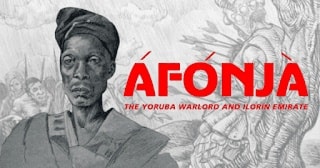Ilorin, a city now known as the capital of Kwara State in Nigeria, has a complex and significant history that reflects the broader political struggles of the 18th and 19th centuries within the Yoruba world and beyond. Once a Yoruba military outpost under the control of the Oyo Empire, Ilorin’s transition into a Fulani emirate marked one of the most defining turning points in Nigerian history. At the center of this transformation was Afonja, the sixth Aare-Ona-Kakanfo of the Oyo Empire.
Afonja and the Yoruba Control of Ilorin
Ilorin was originally established as a frontier military post by the Oyo Empire. Ojo Isekuse, a Yoruba hunter, was the first known settler of the area, but it was later fortified and governed by Afonja, the Aare-Ona-Kakanfo—the military commander-in-chief of the Oyo Empire. Afonja administered Ilorin on behalf of the Alaafin (king) of Oyo, holding substantial military and political influence.
Conflict Between Afonja and Alaafin Aole
The tension that ultimately led to Afonja’s fall began during the reign of Alaafin Aole (c. 1789–1796). Aole gave Afonja several controversial orders, including attacking the town of Iwere-Ile, a place traditionally avoided due to spiritual taboos. Afonja defied these orders and later rejected another command to attack Apomu, a town in Ile-Ife, regarded as sacred. To signal his final break from the authority of the Alaafin, Afonja sent an empty calabash and parrot’s eggs to Aole—a symbol of rejection in Yoruba tradition.
In response, Alaafin Aole reportedly took his own life in a ritual suicide, uttering a powerful curse on the Yoruba people. This event symbolized the collapse of central authority in Oyo and laid the groundwork for the political upheaval that followed.
Alliance with Shehu Alimi and the Sokoto Jihadists
In seeking to protect his position and challenge the weakened Oyo monarchy, Afonja allied himself with Shehu Alimi, an Islamic scholar and Fulani cleric who had arrived in Ilorin with a band of disciples. This alliance, initially strategic, brought Afonja military support from Alimi’s followers and fighters from the wider Sokoto Caliphate, which had been expanding its Islamic influence across northern Nigeria.
With this support, Afonja and his new allies successfully resisted forces loyal to Oyo and eventually led attacks that resulted in the destruction of Oyo-Ile, the capital of the Oyo Empire, around 1817 or 1818. At this point, Ilorin became a powerful military base and began shifting from a Yoruba to a Fulani-controlled polity.
Afonja’s Downfall and Death
However, the partnership between Afonja and Shehu Alimi soon turned into a struggle for control. Afonja, though powerful, remained a traditional Yoruba warlord and resisted conversion to Islam. As Alimi’s followers grew in number and influence, tensions rose. Afonja also attempted to control the growing violence and lawlessness of the slave-soldiers known as the Jamaa—many of whom were loyal to the Fulani clerics.
Around 1824, these tensions reached a breaking point. Abdulsalam, the son of Shehu Alimi, rallied the Jamaa and led a revolt against Afonja. He was assassinated in the streets of Ilorin in a brutal ambush. His body was reportedly mutilated and left impaled with arrows and spears—a grim display of the fate of one of the most feared Yoruba warriors of his time.
Emergence of the Ilorin Emirate
Following Afonja’s death, Abdulsalam declared himself the first Emir of Ilorin, aligning the city politically and religiously with the Sokoto Caliphate. The traditional Yoruba chieftaincy system was abandoned in favor of the emirate model. From that point forward, Ilorin ceased to be ruled by Yoruba kings and was governed by Fulani emirs under Islamic law.
Failed Yoruba Counterattacks
After Afonja’s death, the Yoruba made several attempts to retake Ilorin. His successor, Toyeje of Ogbomoso, led counter-offensives such as the Battle of Ogele in 1825. Despite initial resistance, these campaigns ended in defeat for the Yoruba, largely due to the superior cavalry and support Ilorin received from Sokoto.
These losses marked the definitive end of Oyo’s military dominance in the region and sealed Ilorin’s status as a Fulani emirate. The city remained outside the political and cultural control of the Yoruba, despite being geographically located within Yorubaland—a reality that remains significant to this day.
The fall of Afonja is more than a personal tragedy; it is a symbol of the dramatic political realignments that occurred in 19th-century West Africa. Afonja’s attempt to assert Yoruba independence from the crumbling Oyo Empire inadvertently opened the door for Fulani dominance. His death not only marked the end of Yoruba rule in Ilorin but also the rise of Islamic emirate structures in a region that had once been firmly under traditional Yoruba authority.
The story of Afonja is a crucial part of Nigeria’s historical tapestry, offering insights into the dynamics of power, alliance, betrayal, and the long-lasting effects of colonial and pre-colonial politics in shaping modern identities and boundaries.
FOLLOW US ON:
FACEBOOK
TWITTER
PINTEREST
TIKTOK
YOUTUBE
LINKEDIN
TUMBLR
INSTAGRAM

 Business12 hours ago
Business12 hours ago
 News12 hours ago
News12 hours ago
 Lifestyle12 hours ago
Lifestyle12 hours ago
 News12 hours ago
News12 hours ago
 Business12 hours ago
Business12 hours ago
 Business12 hours ago
Business12 hours ago
 Crime12 hours ago
Crime12 hours ago
 Crime12 hours ago
Crime12 hours ago














